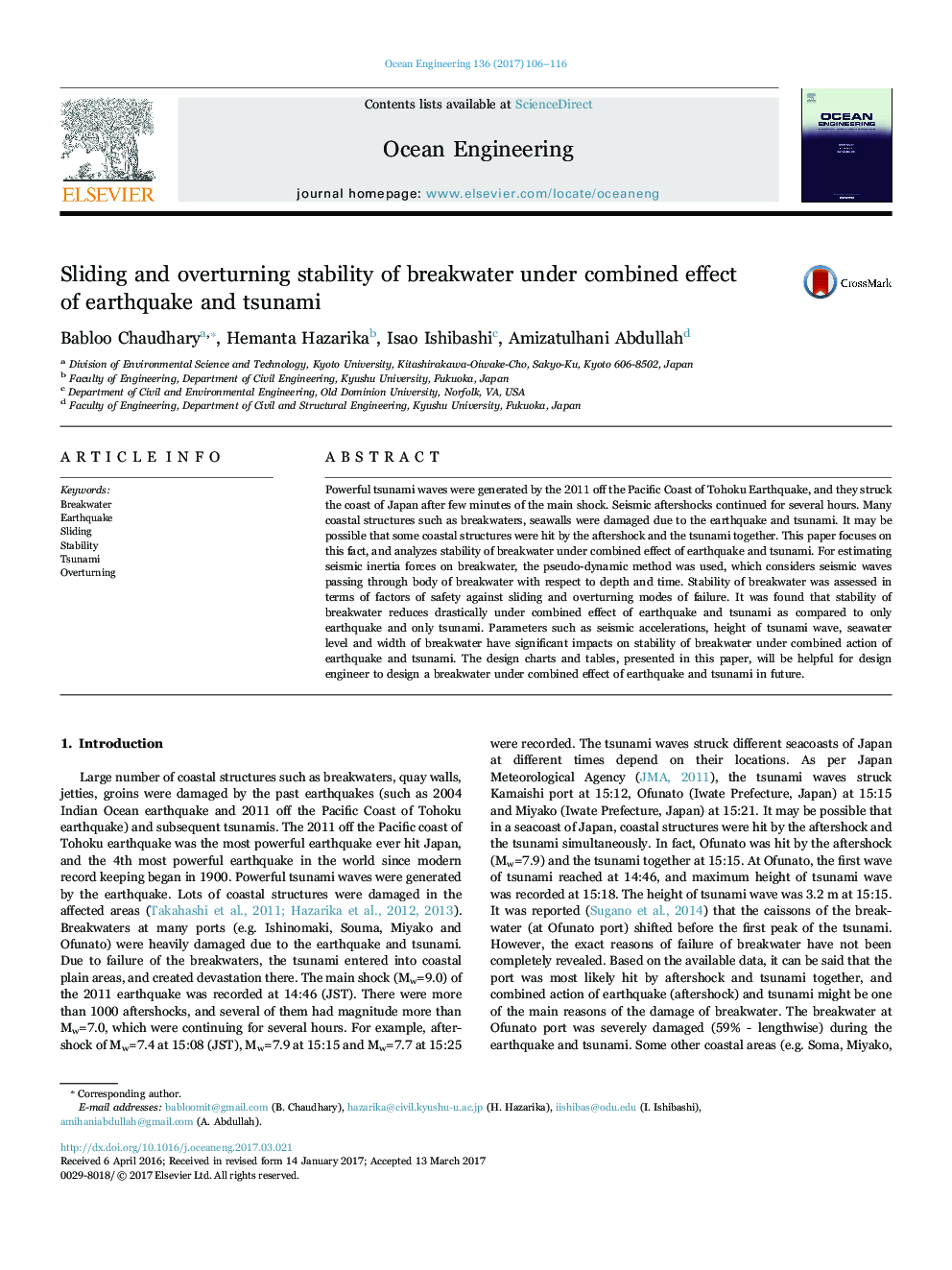| Article ID | Journal | Published Year | Pages | File Type |
|---|---|---|---|---|
| 5474461 | Ocean Engineering | 2017 | 11 Pages |
Abstract
Powerful tsunami waves were generated by the 2011 off the Pacific Coast of Tohoku Earthquake, and they struck the coast of Japan after few minutes of the main shock. Seismic aftershocks continued for several hours. Many coastal structures such as breakwaters, seawalls were damaged due to the earthquake and tsunami. It may be possible that some coastal structures were hit by the aftershock and the tsunami together. This paper focuses on this fact, and analyzes stability of breakwater under combined effect of earthquake and tsunami. For estimating seismic inertia forces on breakwater, the pseudo-dynamic method was used, which considers seismic waves passing through body of breakwater with respect to depth and time. Stability of breakwater was assessed in terms of factors of safety against sliding and overturning modes of failure. It was found that stability of breakwater reduces drastically under combined effect of earthquake and tsunami as compared to only earthquake and only tsunami. Parameters such as seismic accelerations, height of tsunami wave, seawater level and width of breakwater have significant impacts on stability of breakwater under combined action of earthquake and tsunami. The design charts and tables, presented in this paper, will be helpful for design engineer to design a breakwater under combined effect of earthquake and tsunami in future.
Related Topics
Physical Sciences and Engineering
Engineering
Ocean Engineering
Authors
Babloo Chaudhary, Hemanta Hazarika, Isao Ishibashi, Amizatulhani Abdullah,
